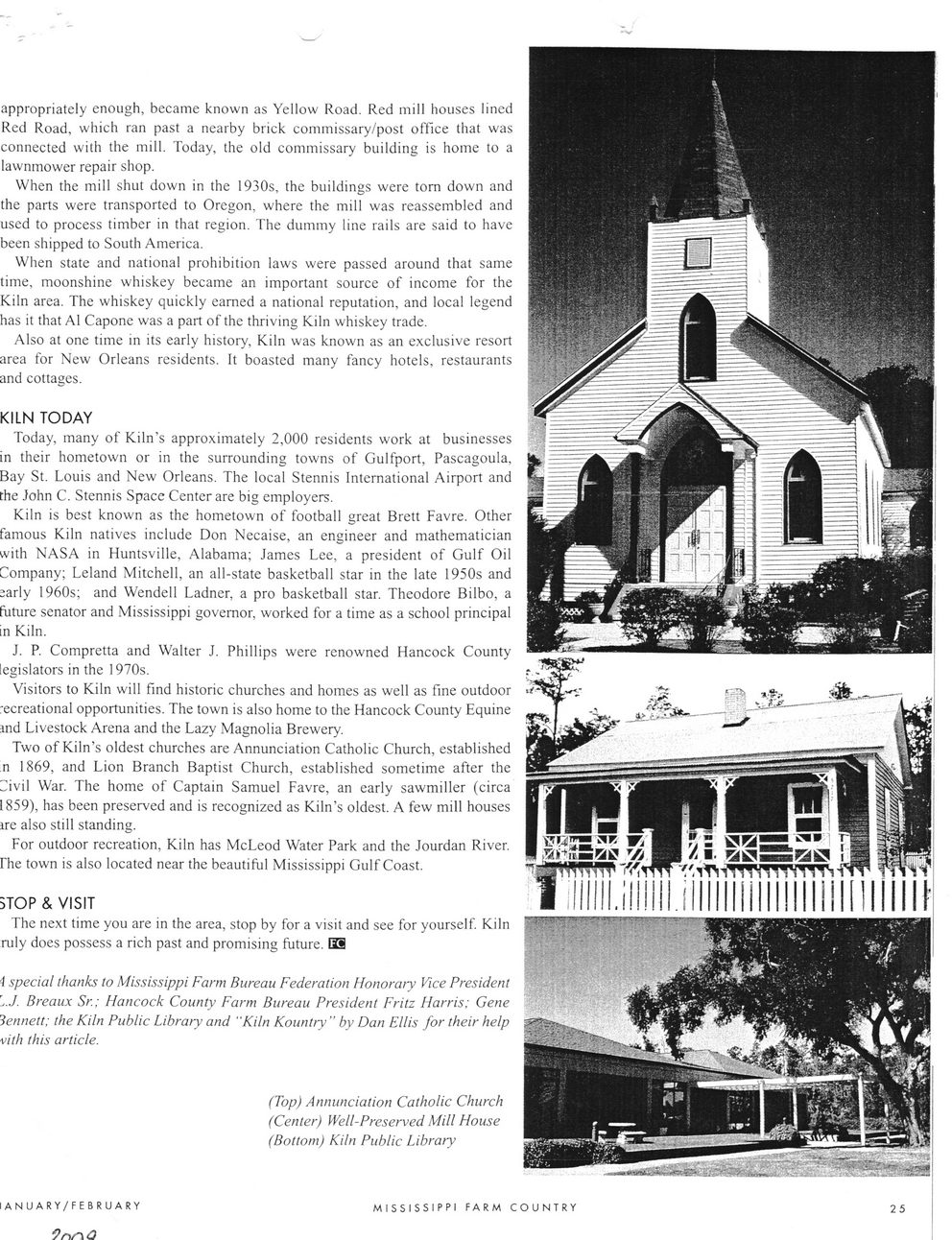This text was obtained via automated optical character recognition.
It has not been edited and may therefore contain several errors.
appropriately enough, became known as Yellow Road. Red mill houses lined Red Road, which ran past a nearby brick commissary/post office that was connected with the mill. Today, the old commissary building is home to a lawnmower repair shop. When the mill shut down in the 1930s, the buildings were tom down and the parts were transported to Oregon, where the mill was reassembled and used to process timber in that region. The dummy line rails are said to have been shipped to South America. When state and national prohibition laws were passed around that same time, moonshine whiskey became an important source of income for the Kiln area. The whiskey quickly earned a national reputation, and local legend has it that A1 Capone was a part of the thriving Kiln whiskey trade. Also at one time in its early history, Kiln was known as an exclusive resort area for New Orleans residents. It boasted many fancy hotels, restaurants and cottages. KILN TODAY Today, many of Kiln’s approximately 2,000 residents work at businesses in their hometown or in the surrounding towns of Gulfport, Pascagoula, Bay St. Louis and New Orleans. The local Stennis International Airport and the John C. Stennis Space Center are big employers. Kiln is best known as the hometown of football great Brett Favre. Other famous Kiln natives include Don Necaise, an engineer and mathematician with NASA in Huntsville, Alabama; James Lee, a president of Gulf Oil Company; Leland Mitchell, an all-state basketball star in the late 1950s and sarly 1960s; and Wendell Ladner, a pro basketball star. Theodore Bilbo, a future senator and Mississippi governor, worked for a time as a school principal in Kiln. J. R Compretta and Walter J. Phillips were renowned Hancock County legislators in the 1970s. Visitors to Kiln will find historic churches and homes as well as fine outdoor •ecreational opportunities. The town is also home to the Hancock County Equine md Livestock Arena and the Lazy Magnolia Brewery. Two of Kiln’s oldest churches are Annunciation Catholic Church, established n 1869, and Lion Branch Baptist Church, established sometime after the Civil War. The home of Captain Samuel Favre, an early sawmiller (circa 1859), has been preserved and is recognized as Kiln’s oldest. A few mill houses ire also still standing. For outdoor recreation, Kiln has McLeod Water Park and the Jourdan River. The town is also located near the beautiful Mississippi Gulf Coast. STOP & VISIT The next time you are in the area, stop by for a visit and see for yourself. Kiln ruly does possess a rich past and promising future. E9 i special thanks to Mississippi Farm Bureau Federation Honorary Vice President L.J. Breaux Sr.; Hancock County Farm Bureau President Fritz Harris; Gene Sennett; the Kiln Public Library and “Kiln Kountry " by Dan Ellis for their help vith this article. (Top) Annunciation Catholic Church (Center) Well-Preserved Mill House (Bottom) Kiln Public Library IANUARY/FEBRUARY MISSISSIPPI FARM COUNTRY 0r^r\O

Kiln Kiln-MS-Farm-Country-20092